Electricity is actually made up of extremely tiny particles called electrons that you cannot see with the naked eye unless you have been drinking. -Dave BarryWelcome back to our series on The Greatest Story Every Told, where we start from before the big bang and come forward in time to get the Universe we have today. (If you're just joining us, go back for parts 1, 2, 3, 4 and 5.) Last time, we talked about how we made more matter than antimatter (and we clarified some questions). So what does our Universe look like at this point?
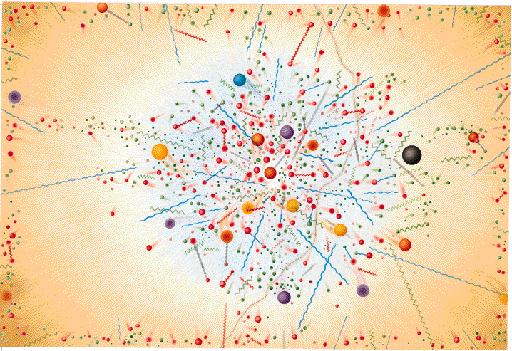
Well, the Universe is still full of hot radiation, flying around and slamming into everything, including nearly equal amounts of both matter and antimatter. Nearly equal, but not quite. For every ten billion antiquarks, there are something like ten billion and six quarks, and for every ten billion positrons, there are ten billion and six electrons. And while all of this is going on, the Universe is expanding and cooling as it continues to age. Everything moves away from everything else, just like dots on the surface of a balloon.
(For those of you wondering just how far back in time I'm talking about, the Universe is about one femtosecond, or 10-15 seconds, old at this point.)
Well, what happens as the Universe expands and cools? Things smack into each other far less often, for one, because there's more space between them in general. And when they do smack into each other, because things are cooling in addition to expanding, they hit each other with less energy. Even though matter and antimatter are constantly running into one another and annihilating, what's not happening anymore as the Universe ages is that you're not making more matter and antimatter to replace what you're destroying; it's all becoming radiation. In other words, this happens.
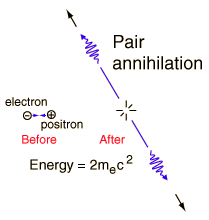
And its counterpart, shown below, is no longer happening once the Universe gets cool enough.
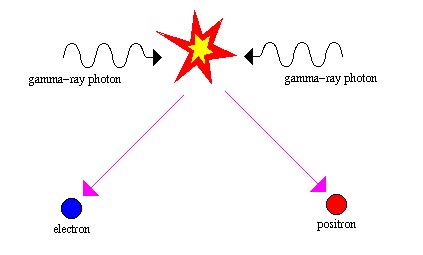
So instead of a fiery inferno, where everything is continuously blasted apart mere instants after it's created,
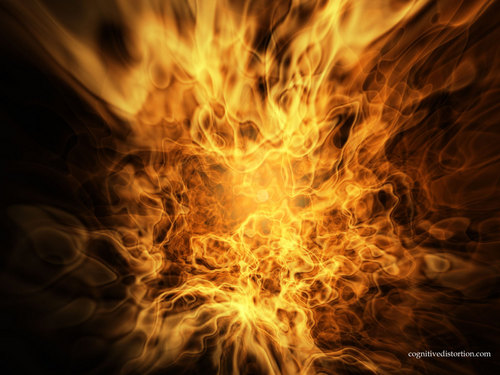
things are instead coming together a little more calmly. This means when two up quarks and one down quark get together, they can finally, when the Universe is about 10 microseconds old, form a stable proton. And when two down quarks and one up quark get together, they can form a stable neutron.
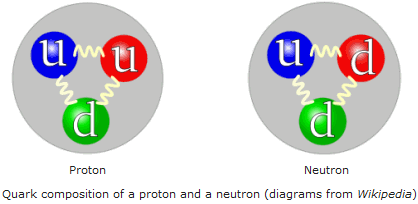
All told, the matter and antimatter has all annihilated away, and so our Universe is full of the radiation left over from that, and that tiny little excess of matter: protons, neutrons, and electrons. At this point, the Universe is still only one second old, and still hotter than the center of the Sun, but it looks an awful lot more like what you're used to!
So come back for part 7, where we'll see if we can't save these unstable neutrons from disappearing!


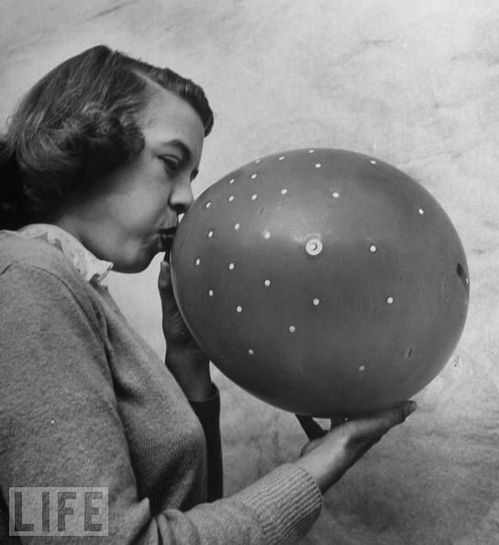



Comments
Ethan,
I think one interesting thing you're leaving out is the pressure of the universe...at least as a chemist, I'm interested in just how tightly packed together the matter that makes up the universe is at such early points in time. Is this something that has been calculated?
~Rich
Posted by: Rich | March 8, 2010 10:36 PM
So what you're saying is that were it not for inflation, there would not have been enough "cooling" (through expansion of space) to stop the constant, new creation of matter by gamma ray photons smacking into each other, and the matter's annihilation via particles and anti-particles hitting each other and creating gamma ray photons. Without inflation this 1:1 ferris wheel of matter into energy and energy back into matter would not have stopped. And inflation stopped it and let temps. cool enough to allow quarks to form stable nuclei.
Is that even close?
Posted by: Douglas Watts | March 8, 2010 11:48 PM
I think your being a bit human-centric in only discussing the role of baryonic matter, which so were told, makes up only a small part of all the matter in the universe. What about dark matter? Should you not be explaining it's role in the creation of the universe or do you have no confidence in CDM theory?
Posted by: Jon | March 9, 2010 2:16 AM
@Jon
Exactly what the dark matter is doing at this point, other than interacting gravitationally, is pretty strongly dependent upon what kind of particle(s) it's made of. The interaction cross-section, decay rate, annihilation products (and any temperature dependence of these) are all things that are TBD.
That said, we know from the success of CDM that it should be there (with some power spectrum, perhaps seeded by inflation), with the baryonic matter sitting on top of it, ready to create the CMB anisotropies in a few hundred thousand years. And it shouldn't have much more of an influence than that (or we would have seen the effects already).
Posted by: dg | March 9, 2010 6:33 AM
@Rich: At these early times, the universe is radiation-dominated. Hence the pressure is simply one third of the energy density, and the energy density of radiation goes with the scale factor a to the power of -4. Hence the pressure also goes with the scale factor a to the power of -4. And the scale factor a is equal to 1/(1+z) with the redshift z. Hence if you know the radiation pressure p_0 (or the energy density) today, you get the pressure at earlier times simply using p = p_0 (1 + z)^4. Both the radiation pressure p_0 today and the redshift z at the eras which Ethan discusses here are well-known, so this is quite easy to calculate (IIRC, there are some problems with treating the neutrinos, since they behave somewhat differently from photons, but that doesn't change much in the results). I don't have the relevant numbers available right now, but this should be easy to look up...
Posted by: Bjoern | March 9, 2010 8:43 AM
@Bjoern
Making reasonable assumptions, it's easy to see that at some point in history, the universe must be radiation dominated. But for how long? What about the dark matter part? Hard to see how that contribution would be radiation dominated, or for that matter, how dark matter could ever fall into thermal equilibrium on a "reasonable" time scale.
63999999
Posted by: ScentOfViolets | March 9, 2010 10:03 AM
@ScentOfViolets: The energy density of matter (and that also holds for (cold) dark matter) goes with the scale factor to the power of -3, but the energy density of radiation goes with the scale factor to the power of -4. Using the known energy densities of matter and radiation today, it's easy to calculate that at z values higher than about 3200, the universe was radiation-dominated.
I'm not sure about dark matter being in thermal equilibrium, but I'd guess that using sensible assumptions like dark matter consisting of supersymmetric partner particles (e. g. the "neutralino"), it is probable that these particles where in thermal equilibrium before the breaking of supersymmetry. But the argument about the domination of radiation does not depend on thermal equilibrium anyway, as far as I can see.
Posted by: Bjoern | March 9, 2010 1:21 PM
Following along with eyes so wide they may pop out. Thanks for linking to parts 1,2,3,4,5. Big help.
Posted by: ThirtyFiveUp | March 9, 2010 9:11 PM
I remember my first encounter with this whole shebang - I'd been an astronomy buff my entire life, but when I walked in to my Astronomy class in college, I had no idea the Big Bang was so complicated, but it fascinated me because it wasn't a neatly bound package of "Boom! Universe!"
Posted by: Patk | March 10, 2010 12:07 AM
@Bjoern:
But as I pointed out beforehand, you're making some explicit assumptions about dark matter that I don't think are warranted by what we know right now. Sure, if dark matter is some heavy cold particle set that only interacts via the weak force and gravitation this is true, power laws being what they are.
But I haven't heard anything about this if so - shoot, weren't neutrino's dismissed as a candidate for dark matter and then put back in . . . twice? - and afaik, we're still looking at axions, WIMPs, et al as candidate particles.
Posted by: ScentOfViolets | March 10, 2010 4:23 PM